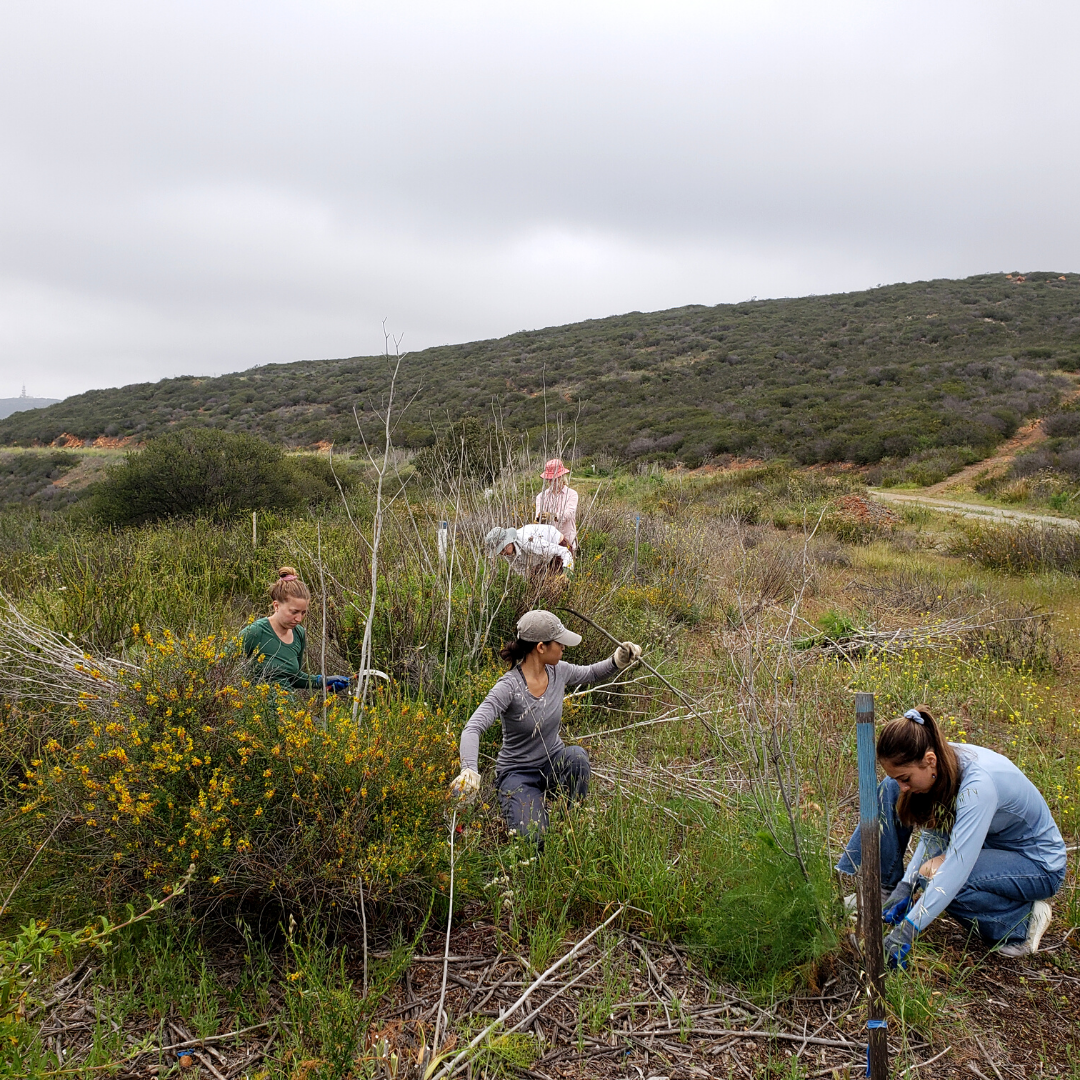
Why Are We Cutting Down Trees?
Timbeeerrrr!!! After acquiring the George Sardina, MD Preserve last fall, trees are coming down. So why is a Conservation organization cutting down trees? We should specify we’re only cutting down one category of tree: non-native trees, including eucalyptus. And no, not just because of the record-breaking fires that rampaged through Australia last month, and the evidence that volatile oils in eucalyptus trees fuel more intense fires. The primary reason for removing these trees is for biodiversity. Yes, cutting down eucalyptus is allowing more biodiversity to thrive. Let us explain…
Recently, the Conservancy partnered with CalFire’s sawyer training program to practice eucalyptus removal on our Preserve. A win-win situation! After clearing the first plot of eucalyptus, a diverse understory of ceanothus, monkeyflower, manzanita, buckwheat, and scrub oak was revealed. Eucalyptus is known for its heavy water usage and shading out its competition, which stunts the growth of our native habitat—a likely explanation for why the native vegetation wasn’t as established in this area. While we aren’t sure how many eucalyptus were planted here initially, the spread of these trees into coastal sage scrub, riparian, and chaparral ecosystems is notable. So why is this a problem?
The habitat and resources eucalyptus provide are limited. As southern California continues to experience changes to its environment—including urban sprawl, climate change, and habitat fragmentation—our local ecosystems will need the best fighting chance possible to adapt. This is why native biodiversity is so important. The more diversity in plants and wildlife, the better chance an ecosystem has at adapting to those imminent changes. And we’ll always keep a few dead eucalyptus (known as snags) for the raptors, until such time as large native trees like sycamores can take their place.
Because of the complexity of this restoration—and the fact that there are thousands of eucalyptus—the restoration of Sardina Preserve could take 5+ years to complete. During that time, the Conservancy will be working with partners like CalFire and the Nature Collective, who are also helping fund eucalyptus removal on the property. The Conservancy will also engage students and community members so they can participate in the restoration and conduct their own research projects. Additionally, the Conservancy has partnered with the non-profit Lumbercycle to help us recycle the wood to fight climate change.
Keep a lookout for more ways that you can participate in the transformation!






